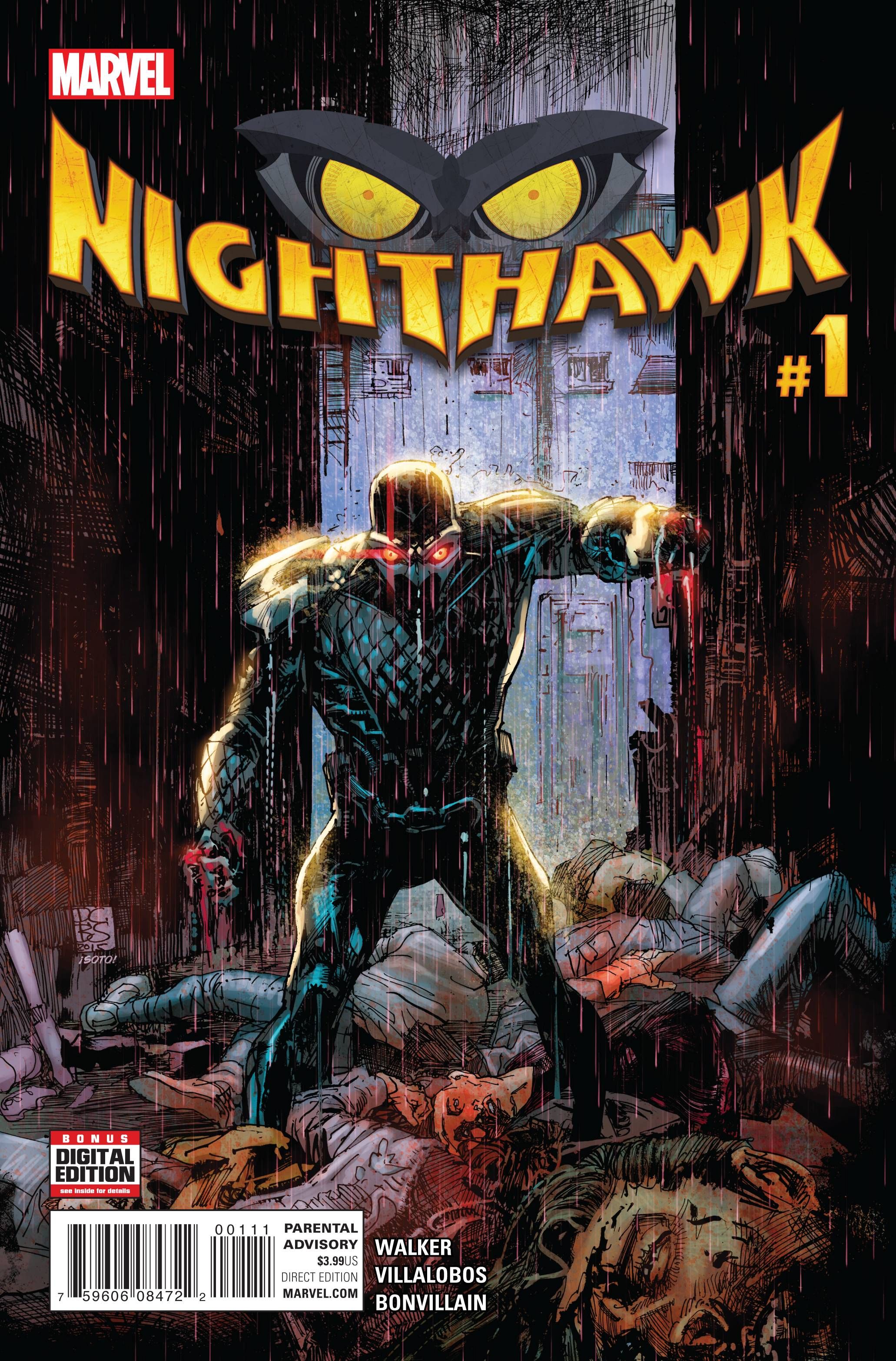In David F. Walker and Ramon Villalobos' "Nighthawk" #1, an alternate version of Kyle Richmond -- aka Raymond Kane -- finds himself as Chicago's protector, but the dimensionally-displaced dark hero finds that it's an all-too-difficult city to protect. Walker's Nighthawk is part Batman, part Punisher, by way of his brutal and ultimately deadly methods of taking on the underworld. Walker's Windy City is also a realistic interpretation of an urban area plagued with problems -- real-world problems, not like Gotham with its freakish rogues or Marvel's New York with its superhero battles on every street corner -- and that setting gives this story some additional impact.
Villalobos convincingly captures this realism in the very first panel, as the action unfolds at a decidedly average junkyard with a decidedly non-touristy part of the Chicago skyline in the background. Villalobos details the ugliness without bringing extra attention to it, content to merely let it set up and serve as the environment to Walker's story. His racist drug and gunrunners are similarly unappealing, and his art takes great joy in presenting every broken nose and fractured limb. It's gratuitous, yes, but it's not comic book violence; it's the kind of violence that can happen in real life situations, playing into Walker's gritty intent for the story.
Similarly, Villalobos' Nighthawk is a fair approximation of a real-life superhero -- if "hero" is the right word. His black-clad creature of the night looks intimidating, yet functional; he doesn't have a cape, but he's got some pretty useful high-top sneakers fit to deliver dangerous kicks to the face. The simply-designed but intensely bright eyes are also intimidating and eerily colored by Tamra Bonvillain. Villalobos curiously goes for a mystery angle when it comes to showing Kane's face behind the mask, though; keeping the character's face off-panel alludes to a mystery that doesn't exist. Kane is a perfectly normal looking guy, but the moments leading up to his civilian guise implicitly hint otherwise.
Walker has a gift for authentic-sounding lingo; the obscure pop culture references and specific make and model names for weapons may or may not be factual, but they sound convincing and go a long way towards keeping this story feeling real. Whether in his costume or not, Kane's dialogue is efficiently tight; he speaks only when he needs to, although Walker relies on an especially tired cliche to indicate this. Kane's assistant Tilda Johnson gets some especially bitey lines, and the news broadcasts frequently heard in the background sound as though they come from a legitimate newscast and not an overly-sensationalized comic book interpretation of one.
Denys Cowan and Bill Sienkiewicz's cover is an almost perfect representation of this gritty, urban story, with an iconic shot of the character in a dark alley. "Nighthawk" #1 provides a compellingly realistic attempt at showing what the Punisher might be like if he had Batman's tech and existed in our world, dealing with everyday issues that might seem a little too mundane for a superhero. There's nothing mundane about Walker and Villalobos' effort, though; they have provided the character a home, and it's one that could use a superhero's touch, albeit a dark and violent one.

